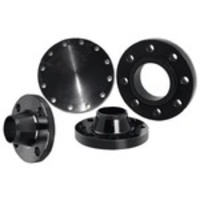
When connecting pipes, valves, pumps, and other equipment in piping systems, pipe flanges are a necessary component. They offer a way to quickly assemble and disassemble pipe parts while keeping a tight seal when put under pressure. Pipe flanges are available in a range of sizes, shapes, and compositions to accommodate diverse uses and operational circumstances. Several important considerations need to be made when selecting pipe flanges to guarantee the best performance and compatibility with the piping system.
Key Factors to Consider
- Flange Type: Pipe flanges are available in different types, including weld neck, slip-on, socket weld, threaded, and blind flanges. Each type has unique features and applications. Weld neck flanges offer high strength and reliability, while slip-on flanges are easier to install and align. Socket weld and threaded flanges are suitable for smaller pipe sizes and low-pressure applications, while blind flanges are used to seal the end of a piping system.
- Flange Material: The performance and longevity of the flange are significantly influenced by its material. Alloy steel, carbon steel, stainless steel, and non-ferrous metals like copper and brass are frequently used to make pipe flanges. The choice of material depends on factors such as the fluid being conveyed, temperature, pressure, corrosion resistance requirements, and environmental conditions. For example, stainless steel flanges are preferred for corrosive environments, while carbon steel flanges are suitable for general-purpose applications.
- Pressure Rating: Pipe flanges are designed to withstand specific pressure levels, known as pressure ratings. To guarantee the integrity and safety of the piping system under operating conditions, flanges with the proper pressure rating must be chosen. A flange’s pressure rating is determined by its material, design, and manufacturing standards, among other things.
Additional Considerations
- Size and Dimensions: Pipe flanges are available in various sizes and dimensions to accommodate different pipe diameters and thicknesses. It is crucial to select flanges that match the size and specifications of the piping system to ensure proper fit and alignment. Flange dimensions are standardized according to industry standards.
- Corrosion Protection: Corrosion is a common concern in piping systems, especially in industries handling corrosive fluids or operating in harsh environments. Choosing flanges with appropriate corrosion protection measures, such as coatings, plating, or corrosion-resistant materials, can help prolong the service life of the flanges and prevent premature failure.
- Cost and Availability: Consideration should also be given to the cost and availability of pipe flanges. While high-quality, durable flanges may come at a higher initial cost, they offer long-term reliability and performance, reducing the risk of costly downtime and repairs. Additionally, ensure that the selected flanges are readily available from reputable suppliers to avoid delays in project timelines.
Conclusion:
Choosing the right pipe flanges is essential for the proper functioning and reliability of piping systems in various industrial applications. By considering factors such as material compatibility, pressure, and temperature ratings, dimensions, end connection type, corrosion resistance, cost, and availability, you can select pipe flanges that meet your specific needs and ensure the integrity and efficiency of your piping system. Always consult with experienced professionals and adhere to industry standards and specifications when making flange selections to achieve optimal performance and safety.